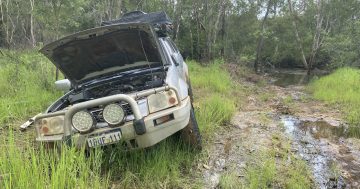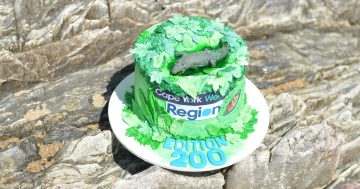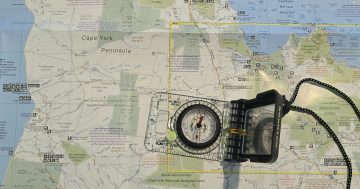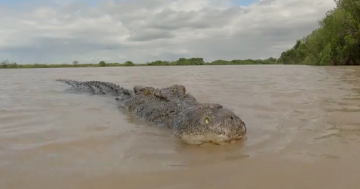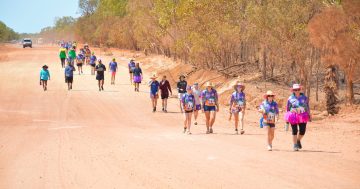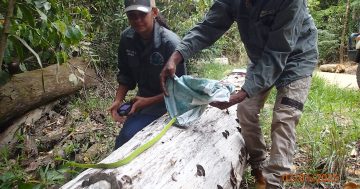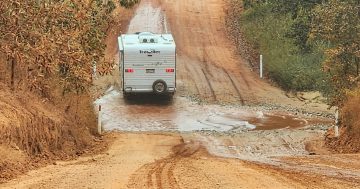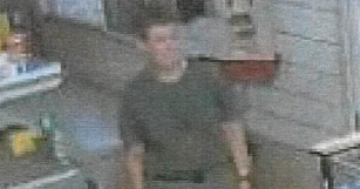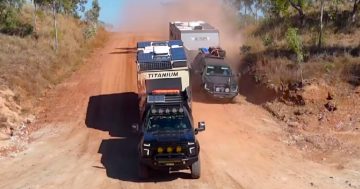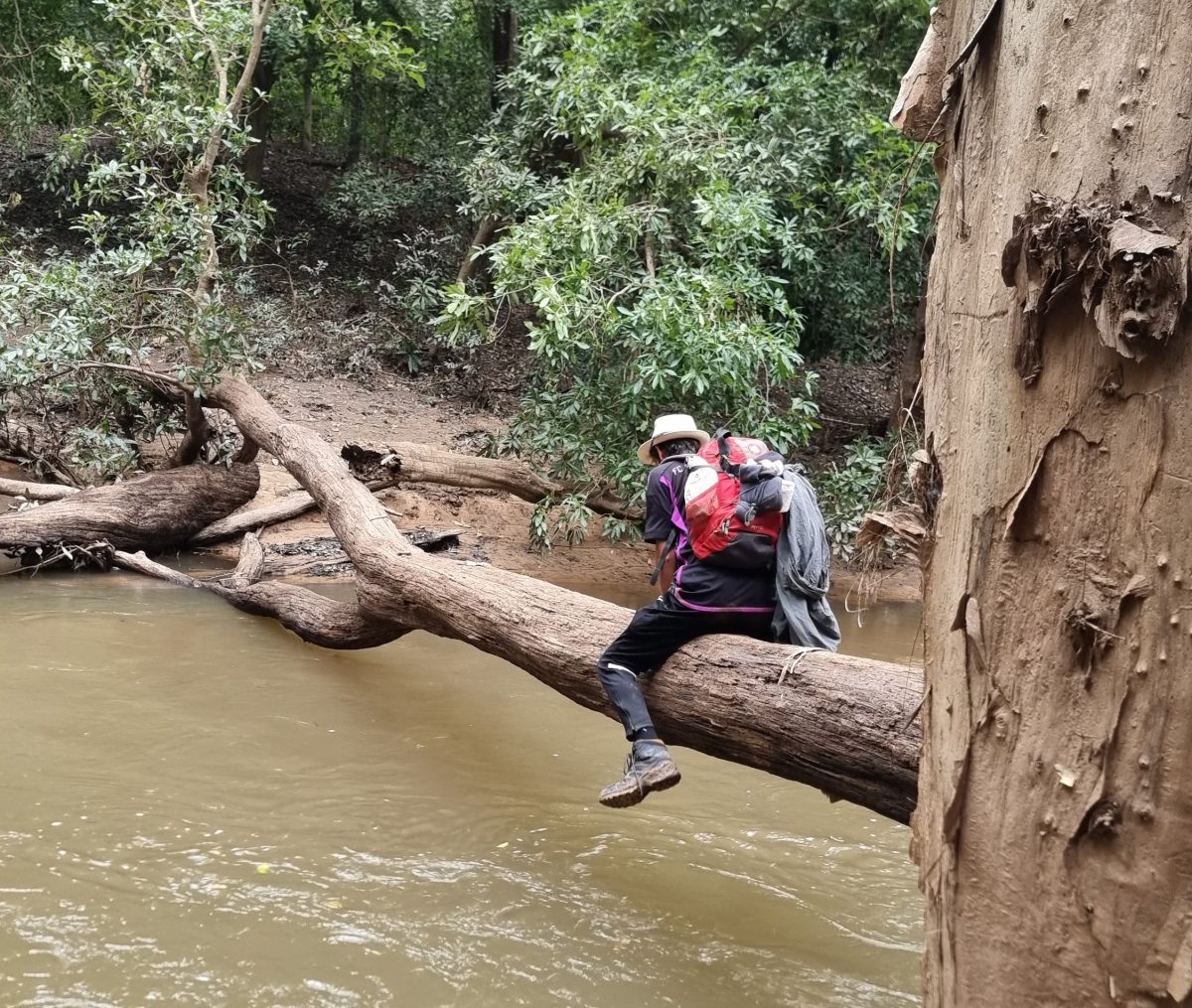
Philipp Maier attempts a river crossing over a flooded creek in Oyala Thumotang National Park after he and his travel partner, Marcel Schoene, became bogged on 6 February, 2024 following a Google Maps alternative route from Coen. Photo: Supplied.
A chance encounter in Adelaide and a Google Maps failure have resulted in a lucky escape and the travel story of a lifetime for two German tourists after they were stuck in remote Cape York bushland for seven days.
On 6 February 2024, Marcel Schoene, 25, and Philipp Maier, 20, set off from Coen in the hope of making the 385-kilometre trip north to Bamaga in their four-wheel drive.
After discovering the Archer River crossing on the Peninsula Developmental Road was closed due to floodwater, the pair decided to follow the alternative route proffered by Google Maps, unaware it was telling them to drive through the closed – and impassable – Oyala Thumotang National Park.
It was a mistake that ended up taking seven days and a 100km walk through muddy scrub, and across swollen creeks and rivers to rectify before they were rescued at the Coen aerodrome on 13 February.
Speaking exclusively to Cape York Weekly, Mr Schoene and Mr Maier explained while they knew Cape York wet season conditions were not conducive to road trips, the combination of a sunny sky and relying on Google Maps to plot a bypass around the Archer River crossing had created a feeling of nonchalance about what lay ahead of them.
“We wanted to try it, but when we started driving, the weather was very good and the weather was very clear, so we thought we could do it,” Mr Schoene, who hails from Stuttgart, said after the pair arrived in Cairns on Thursday afternoon.
“We wanted to get to Bamaga and went through the national park, because Google Maps say it was okay to do it,” Mr Maier, from Munich, added.
The plan to conquer Cape York began by sheer coincidence after the tourists met in Adelaide and decided to head north.
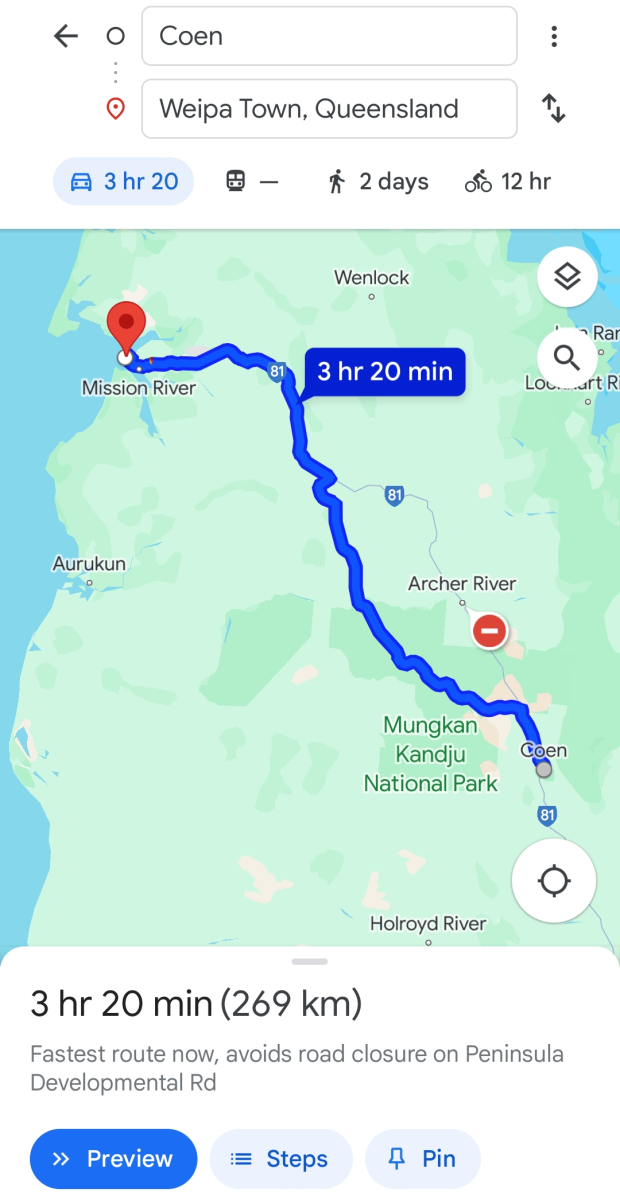
The alternative Google Maps route offered to the German pair directed them to drive through the closed – and flooded – Oyala Thumotang National Park. Photo: Supplied.
After following the Google Maps route into the national park, the pair realised how wet the road was after they bogged their vehicle and managed to get it out, only to bog it to an irrecoverable position only moments later.
“We are thinking, ‘oh, shit, what are we doing from here?’” Mr Schoene explained.
With no mobile reception and only Google Maps to work from, the pair set out on foot in an attempt to reach Archer River Roadhouse and help.
“We wanted to get to Archer River, because the distance was lower than to Coen, so we started to walk, and it was a little path for the first 25km, and then quite big rivers, and we couldn’t cross one,” Mr Maier said.
The pair traversed one flooded creek over a fallen tree, but had to spend the night after they realised there was no way across a second waterway.
“We stayed the night but it rained overnight, and the next morning we couldn’t cross the river because the water had come up and flooded over the tree we were going to use, so we had to go back to the car,” Mr Schoene said.
“The water at the first river was okay to cross, and we walked back to the car and stayed one day, or one-and-a-half days, to recover our muscles.”
After rapidly exhausting the supply of water they had with them, the men said they drank from rivers, creeks and puddles for the remainder of their time in the bush, using a towel as a makeshift filter.
“Sometimes [the water] was okay, but it mostly wasn’t very good,” Mr Maier laughed.
With only pasta with tomato paste and corn and rice to eat, the pair said they realised they had no option but to try to walk back to Coen.
“The food we had became inedible,” Mr Maier said.
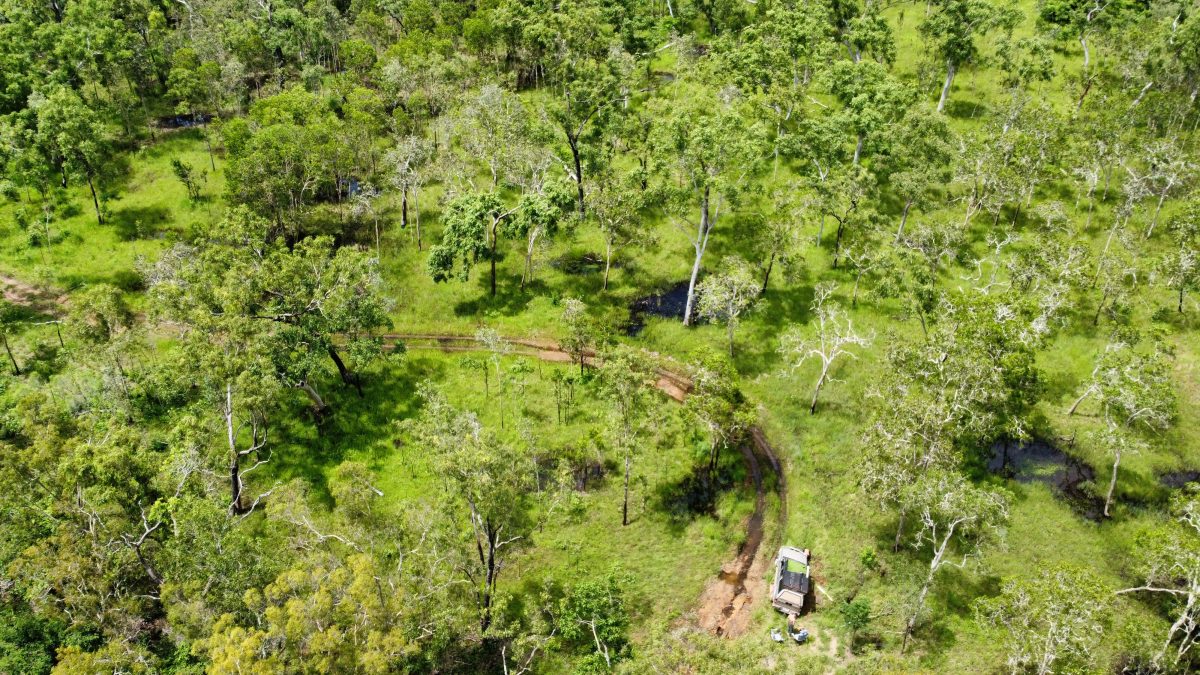
After bogging their vehicle, Marcel Schoene and Philipp Maier tried to walk to Archer River Roadhouse for help, but found the track impassable due to wet season conditions. Photo: Supplied.
The men walked towards Coen for several days, sleeping beside the road, before getting close enough to the township to regain mobile phone reception.
“By then, we were about three kilometres from the airport, so we thought we would go there and maybe get someone to grab us and take us back to Coen,” Mr Maier said of their rescue plan.
Mr Maier and Mr Schoene were given a lift from the aerodrome into Coen by a Cook Shire Council employee before they sought assistance to recover their Nissan Navara, seven days after originally bogging it.
Coen Mechanical owner Sara Watkin and rangers from Queensland Parks and Wildlife Service combined to tow the stranded vehicle out of the national park, but it was not a trouble-free recovery effort.
“We were getting bogged and they were getting bogged, so we just kept winching each other out for about an hour until we got to hard ground,” she laughed as she explained the recovery to Cape York Weekly.
“That vehicle was about five-and-a-half hours to recover and with the rangers with us, it was awesome, because we got to work as a team.”
While the situation could have had a catastrophic conclusion for the German visitors, Mr Schoene and Mr Maier said they were incredibly thankful the Coen community had rallied to rescue and support them.
“We are just so grateful; they are just lovely people who came [to rescue us].” Mr Schoene said.
“We drank some beers in the pub that evening, and we were telling them our story about getting stuck, and they were telling us some of their own experiences as well.
“The whole town knows us now.”
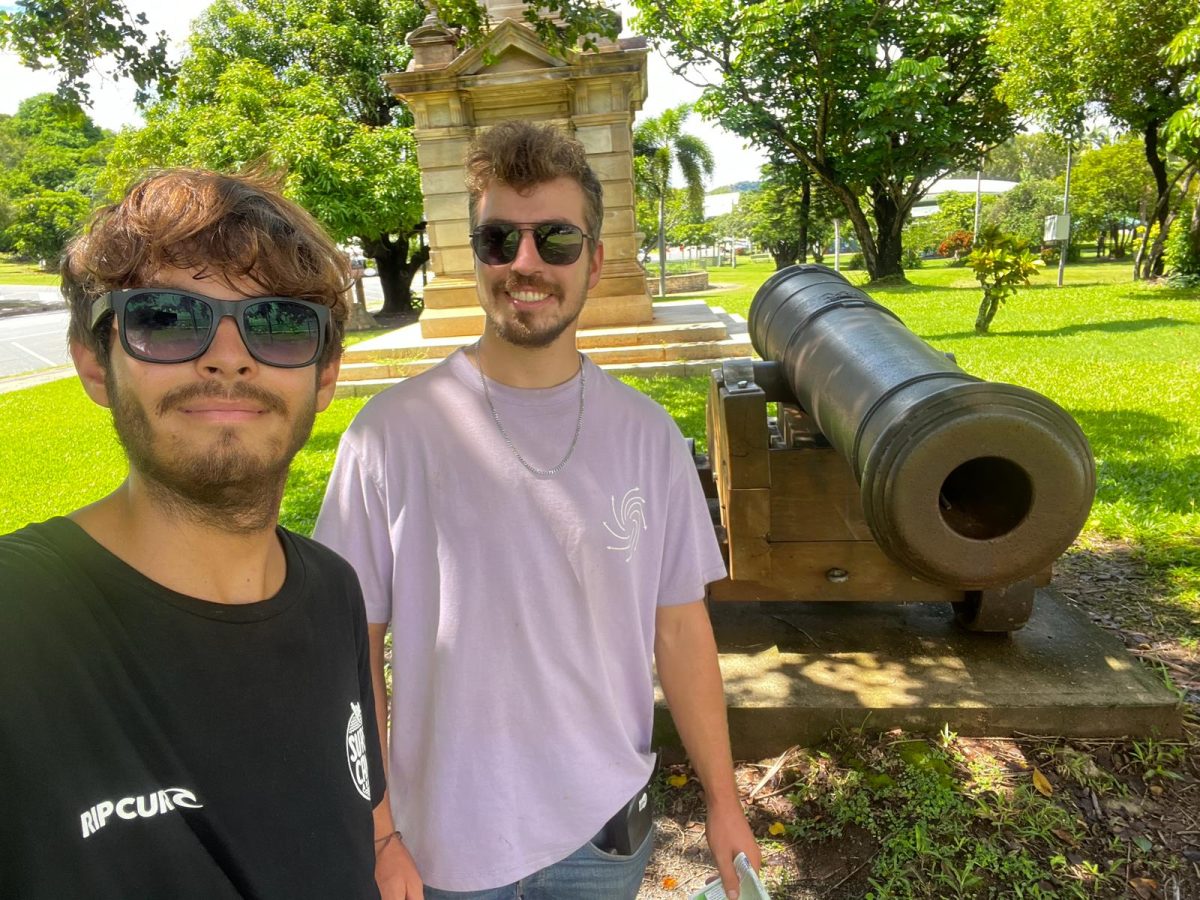
Philippe Maier, 20, and Marcel Schoene, 25, are all smiles after surviving their Cape York stranding. Photo: Supplied.
With their ordeal behind them, the duo will now split up, with Mr Maier set to fly home next week, while Mr Schoene is preparing to head towards Perth.
“I’m finished with Australia now,” Mr Maier laughed.
“I am flying to Sydney on Monday, and back to Munich on Thursday with a hell of a story to tell.”
“I’m staying in Australia, but I don’t know where to go now, maybe to the west coast from Cairns and travel over,” Mr Schoene said.
“I have the four-wheel drive and we did not think it would drive anymore, but it drives normally, which is good.”
Queensland Police Service Cape Patrol Group Inspector Dave Rutherford said the pair’s experience was a timely reminder to utilise available resources, such as the Queensland Government’s road conditions website, before hitting the road.
“Whenever you’re travelling on Cape York, you’ve got to exercise caution, particularly during the wet season,” he said.
“The situation can change rapidly, and you’ve got to be cautious relying on Google Maps, because it’s not always aware of the actual road conditions.”
Google did not respond to inquiries from Cape York Weekly prior to publication.
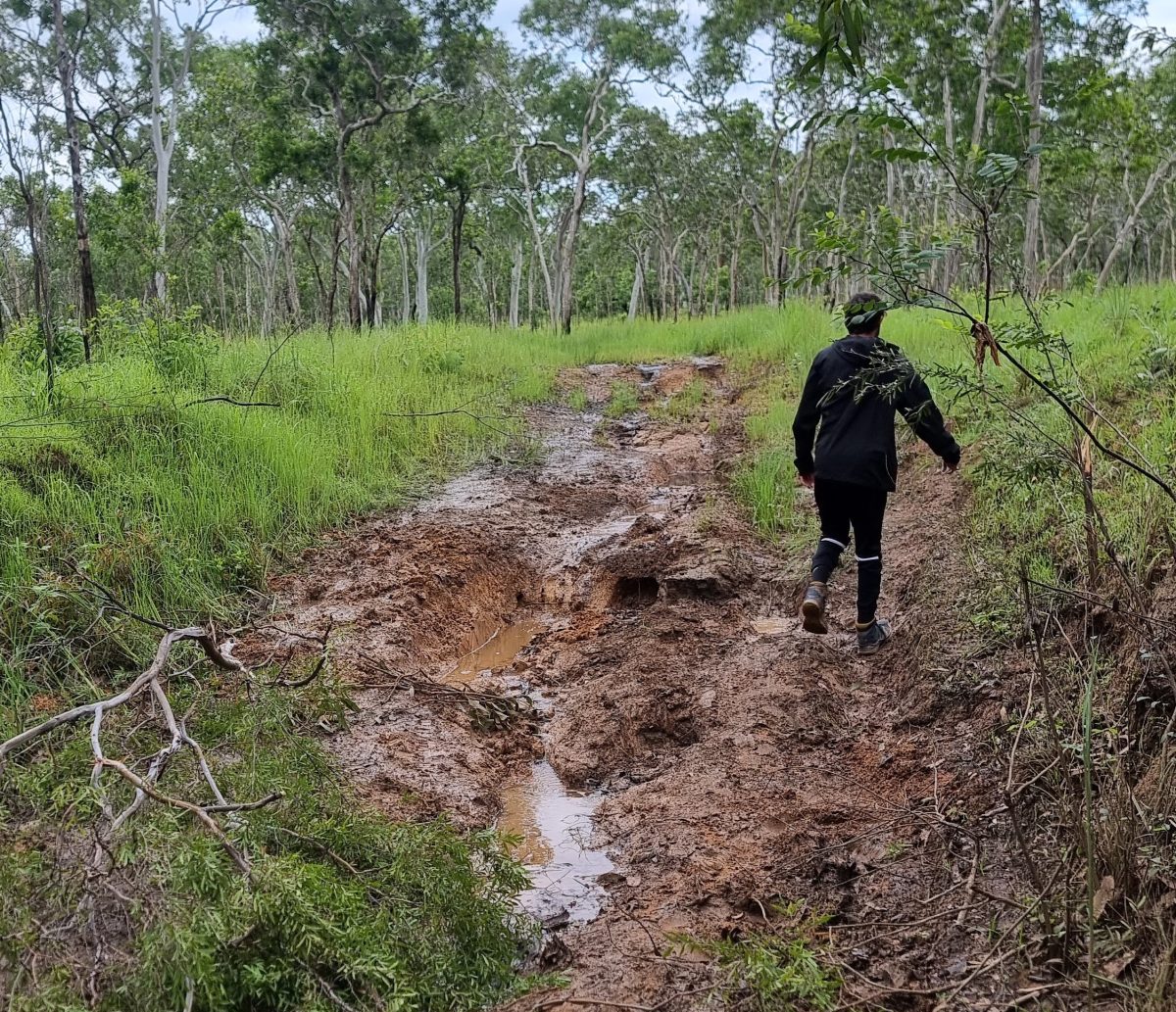
Tourists Marcel Schoene, 25, and Philipp Maier, 20, spent a week in remote bushland near Coen after bogging their Nissan Navara following Google Maps. Photo: Supplied.


